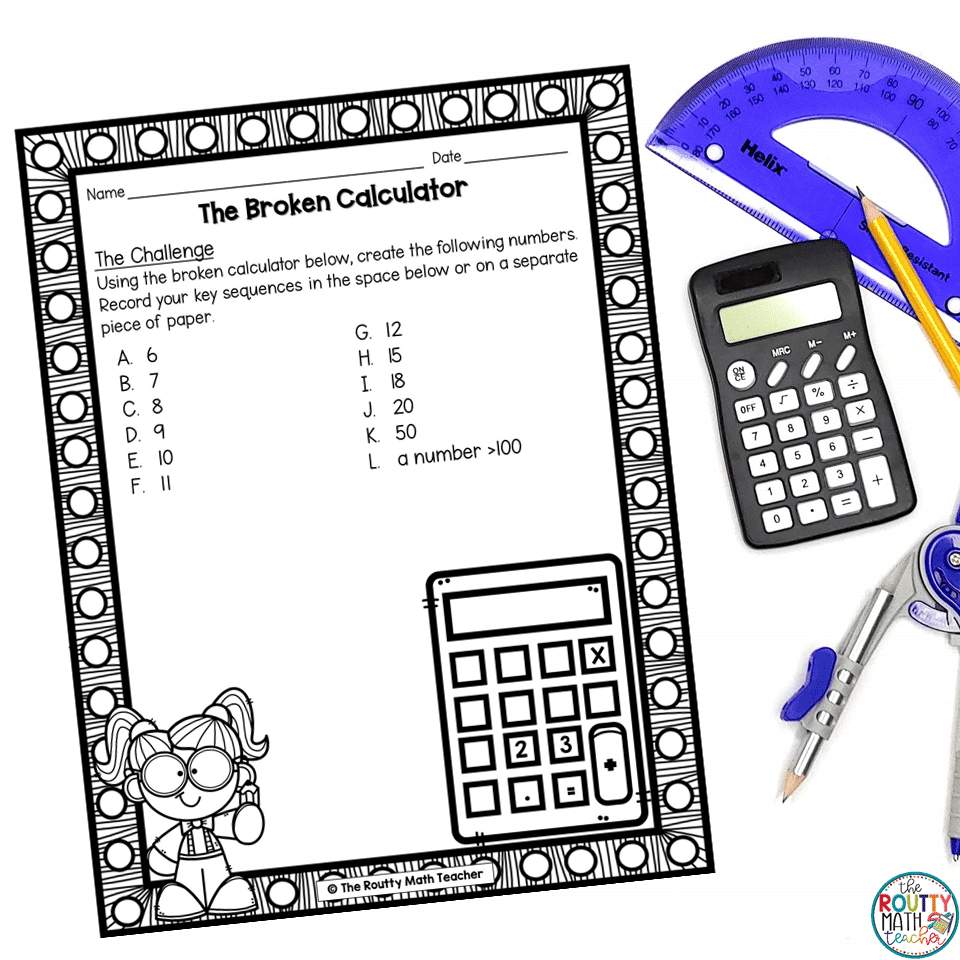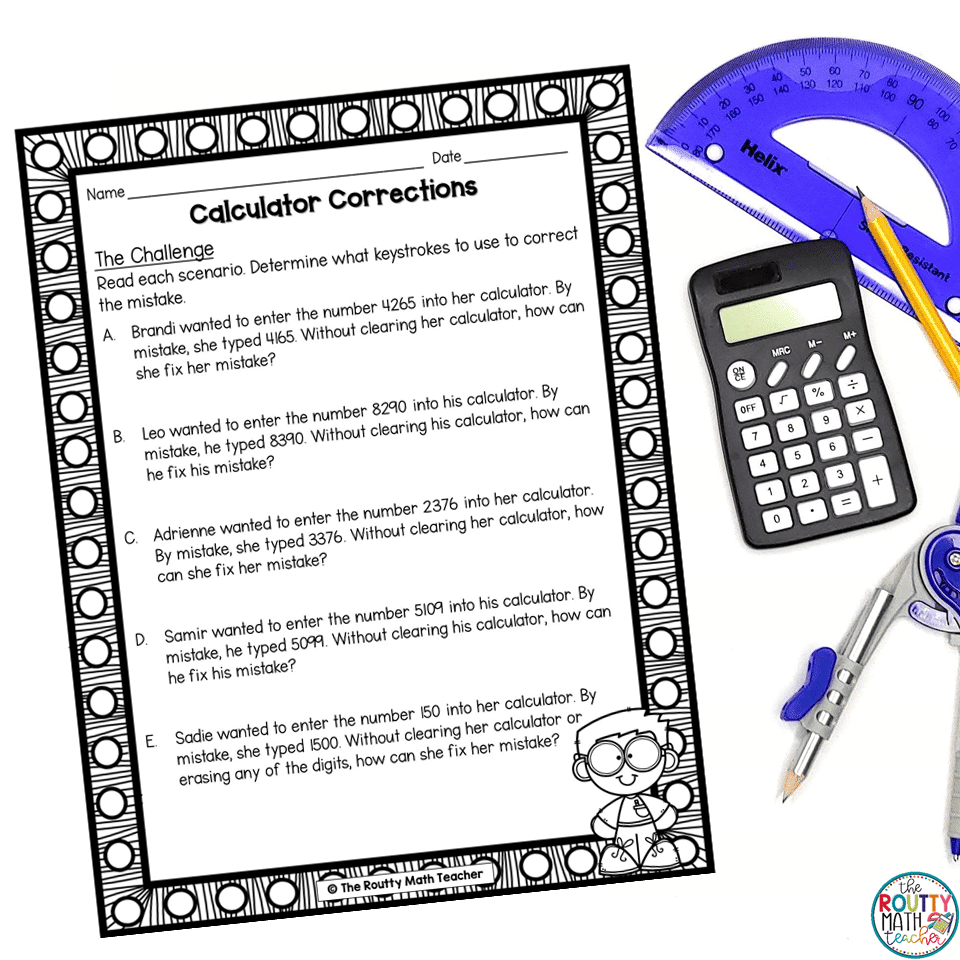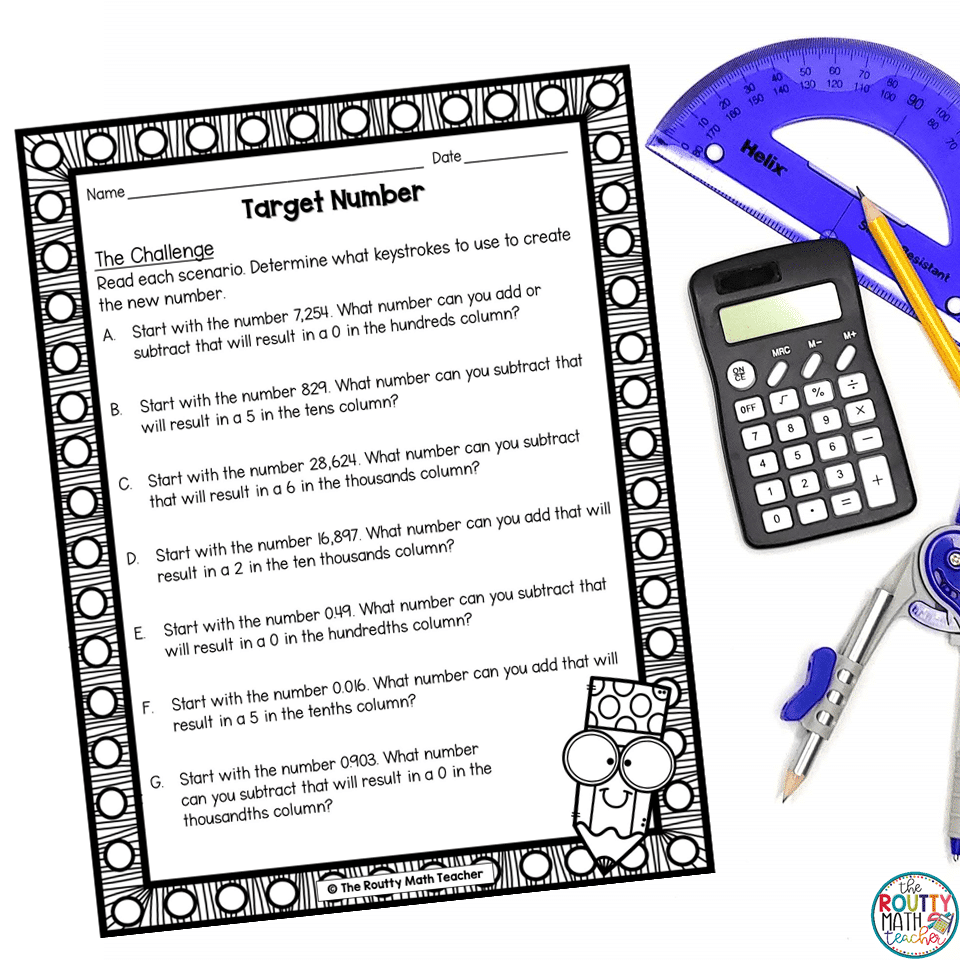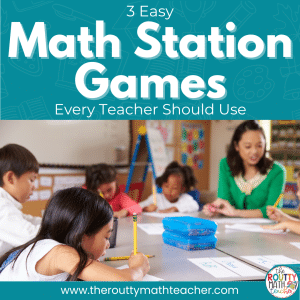To use or not to use. The use of calculators in the classroom has been a hot button topic for years. Many teachers, especially in the younger grades, choose not to use them. But, in today’s post, I’m sharing reasons why it is important to use math calculators in the classroom. I also offer some ways to challenge students with them.
I lifted the towel to steal a quick glance before she saw me.
Over the past few weeks, I had become an expert at it.
I would pretend to be working, and when my teacher was not paying attention, I would lift up the towel covering my hands to sneak a peek at the keyboard.
Learning to type sucked and I hated it. 😩
I didn’t know it then, but I was making a choice that would haunt me for the rest of my life because even as I type this blog post thirty years later, I regret not taking advantage of the opportunity to learn a skill I now use on a daily basis.
I’m sorry, Mrs. Word. I should have listened to you. 😢
—
Most of us use computers every day of our lives. Whether it’s a desktop computer at work, a laptop at home, or a cell phone on the go, we are constantly using electronic devices to manage our day-to-day lives.
The same can be said for using calculators. When’s the last time you calculated anything by hand?
Still, calculators get a bad rap.
Helping Prepare Our Students for the Future
Using math calculators in the classroom has been the center of much debate. While many educators feel we should teach students how to compute without the use of technology, others believe calculators are a part of our advancing society and students should experience using this tool.
The National Council of Teachers of Mathematics, NCTM, offers the following position on the role of calculators in the elementary classroom:
Calculators in the elementary grades serve as aids in advancing student understanding without replacing the need for other calculation methods.
In addition, many state standards, including the Common Core State Standards emphasize the use of calculators as a tool for learning.
Yet, many teachers do not feel calculators should be a part of their math program.
If you fall into this camp of teachers, I’d like to challenge your thinking and offer the following reasons why you should use calculators in the classroom.
Why Should Math Calculators be Used in the Classroom?
1. Calculators enhance problem-solving skills. When students are fluent in math calculations, calculators help students tackle mathematics in more challenging tasks because calculators decrease the workload and allow students to focus on the big ideas.
2. Technology is a big part of our world. Experience with these tools is essential for students in the changing world.
3. Students love using math calculators. It’s a great way to engage students and increase interest in a task.
4. Calculators are accurate and can help students find mistakes. Allow students to check their work with them from time to time.
Calculator Challenges
As mentioned earlier, calculators are great critical thinking tools. Instead of using calculators to aid students with calculations they can do by hand, calculators are used as an integral part of the problem solving process and help students determine the keystrokes needed to complete a task.
Here are three calculator challenges to challenge your students:

A. The Broken Calculator Challenge
In this challenge, students use the remaining keys on a broken calculator to create specific values. To complete the activity, students are given the following:
Some of the keys on a calculator have been damaged and no longer work. Use the remaining keys to determine how to get different values.
For example, in the task shown above, students use the digits 2 and 3, the addition and/or multiplication sign, and the equal sign to make 8.
Students may respond with 2 + 3 + 3 = 8 or 3 x 2 + 2 = 8 where the order of operations is indicated by the keystrokes. Students might even say 2 + 3 x 2 – 2 = 8.

B. Calculator Corrections
This task is a wonderful place value activity because after reading a clue, students determine how to correct a calculator mistake without clearing the calculator.
For this task, students represent place value in numbers. Using the calculator, students determine how to fix a mistake, check the answer, and make adjustments as necessary. After completing the task, students can justify the changes they made.
For example, in the task shown above, students are given the following: Brandi wanted to enter the number 4265 into her calculator. By mistake, she typed 4165. Without clearing her calculator, how can she fix her mistake? Students would then respond to add 100 to 4165 to get 4265.

C. Target Number
This is another great place value task and a great opportunity for math talk! For this task, students represent place value in numbers, determine what number to add or subtract to reach the target number, and use the calculator to check their process.
For example, in the task shown above, students are given the following: Start with the number 7,254. What number can you subtract that will result in a 0 in the hundreds column?
Students would then respond that you can subtract 200 from or add 800 to 7,254 to get a number with 0 hundreds.
How to Get Started
As a fifth grade teacher, Mrs. Word had the wherewithal to help us prepare for the direction she knew the world was headed. While I didn’t understand the big picture then, I’m thankful for her giving us the opportunity to develop a skill we would rely on daily.
Math calculators are important tools, so it’s important we use them with our students. But, be intentional with them.
Want to get started with one of the challenges above? Grab your freebie copy of the calculator challenges shared above using the form below.
Sound Off!
How do you use math calculators in the classroom? Share your thoughts in the comments section below.
References
NCTM: https://www.nctm.org/Standards-and-Positions/Position-Statements/Calculator-Use-in-Elementary-Grades





